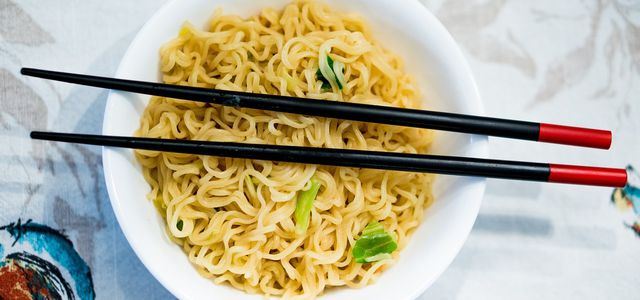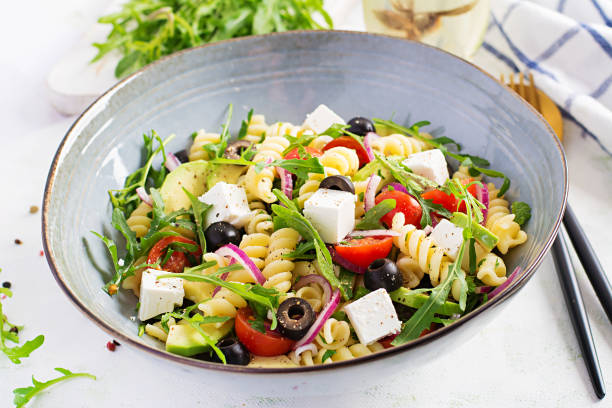Vegan ramen is a delicious twist on the Japanese dish. Here you can find out which ingredients you can use to prepare the pasta classic without any animal products.
If you want to eat vegan ramen, you can easily modify the traditional noodle dish with a few ingredients. The combination of fresh wheat noodles, a spicy aroma and crunchy vegetables conjures up a tasty and healthy meal.
In this article you will learn everything you need to know about ramen and how you can easily cook vegan ramen.
What is ramen?

Vegan ramen is a twist on the classic ramen. Ramen is a traditional noodle dish from Japan. Translated, it means something like hand-pulled noodles. Ramen is the name for the thick wheat noodles made from wheat, salt and water. At the same time, ramen is the name of the classic soup dish that is prepared with noodles, broth and meat, fish or tofu.
Ramen also lives from a fine seasoning. The recipe uses miso: a flavorful paste made from fermented soy. It is suitable for seasoning various Asian dishes, or can simply be prepared as miso soup.
Vegan ramen with different toppings are particularly tasty. Serve with fresh seasonal vegetables such as cabbage, broccoli or edamame. In our Utopia seasonal calendar you can always read which vegetables are currently available from regional cultivation.
When buying your products, make sure that they come from organic farming. In this way you support sustainable agriculture that does not use chemical fertilizers and chemical-synthetic pesticides. If possible, buy at your regional weekly market to support the farmers of the region.
You can get the somewhat unusual ingredients, such as shiitake mushrooms, miso or smoked tofu in a well-stocked health food store.
Prepare ramen: A vegan recipe
The vegetables in this recipe are suggestions and can be modified as desired. Find out which vegetables are in season at the moment and cook with fresh ingredients from the region.
Ingredients:
15 g shiitake mushrooms, dried
2spring onions
2 clove(s) garlic
50 g fresh ginger
100 g fresh shiitake mushrooms
1carrot
100 g edamame, peeled
1pak choy
4 tablespoons sesame oil
30 g miso paste
4 tbsp soy sauce
1.8 l vegetable broth
350 grams of ramen noodles
300 g smoked tofu
1 pinch(s) pepper, coarsely ground
50 g toasted sesame seeds
1 handful of fresh herbs of your choice
Directions:

Soak the dried shiitake mushrooms in a bowl of hot water for 12 minutes.
Then catch the broth and cut the shiitake mushrooms into small pieces.
Wash and peel the vegetables. Chop the spring onions and garlic and finely grate the ginger. Cut the mushrooms, pak choi and carrot into fine strips.
In a wok or large saucepan, heat 3 tablespoons of the sesame oil. First stew the spring onions, garlic, ginger and the dried shiitake mushrooms in it.
Now add the miso paste and the soy sauce. Let everything continue to simmer for two minutes.
Deglaze everything with the mushroom decoction. Add the vegetable broth and let it simmer for 10 minutes on a low heat.
Now add the carrot, edamame and pak choi to the broth and let it simmer for five minutes.
Add the fresh shiitake mushrooms to the soup. Cook them for another five minutes.
Prepare the ramen noodles according to package directions.
Cut the smoked tofu into small cubes and fry it in a separate pan with the remaining sesame oil until crispy.
Serve the ramen noodles in a deep plate along with the vegetable broth and tofu. Decorate the vegan ramen with fresh herbs, ground pepper and roasted sesame.
Tip: Serve with the vegan ramen soy sauce and sesame oil. You can season the ramen as you like.






